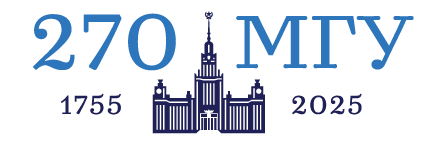2014: A novel type of smart materials created: Magnitoactive elastomers with a high response to the external magnetic fields�
Physicists from Lomonosov MSU (group of Prof. Elena Kramarenko) in collaboration with the Institute for Chemistry and Technology of Organoelement Compounds created a novel type of smart materials — magnitoactive elastomers with high response to the external magnetic fields.�
MAE consists of a polymer matrix filled with magnetic micro- or nanoparticles of iron or iron oxides. They have rather low Young’s modulus (several tens of kPa) and thus occupy an intermediate position between traditional hard magnetic composites and magnetorheological fluids. In contrast to hard magnetic elastomers, in soft polymer matrix elastic forces are of the same order of magnitude as magnetic forces acting between magnetic particles in a magnetic field. As a result, magnetic filler particle can shift from their initial positions and align with magnetic field as they do in magnetic fluids. Controlled change of material internal structure in magnetic field results in unique properties of MAE.
The most widely studied aspect of MAE is the so-called magnetorheological effect, i.e. increase in viscoelastic properties on the application of a magnetic field. We have developed materials demonstrating a huge (100-500 times) growth of the storage and loss moduli in relatively small magnetic fields (up to 300 mT). This property opens wide opportunities for practical applications of MAE, in particular, for devices where tunable stiffness and shape are required – dampers, seals, actuators, valves, artificial muscles, etc. Several devices of this type have already been patented.
In addition to the magnetorheological effect MAE exhibits a number of other unique properties, namely, it demonstrates the following unusual mechanical properties:
- magnetostriction effect, i.e. rapid and controllable medium deformations (up to 16%) in uniform magnetic fields. This effect seems to be caused by magnetic filler structuring in magnetic field;
- magnetodeformational effect, i.e. rapid and controllable huge deformations (up to 100%) in gradient magnetic fields due to considerable shift of magnetic particles built in soft polymer matrix into the area of maximum field;
- new effect of magnetic field induced plasticity or shape memory. This effect is possibly the most exciting one. It is observed in MAE with rather high filler content (~30 vol%). In the absence of any magnetic field, the MAE samples demonstrate usual elastic behavior under mechanical stress. In the magnetic field the material behaves as “magnetic plasticine” rather than �magnetic cautchouk�. The ability to restore the initial form decreases, as a result, even small mechanical stress is enough to give the element made of MAE any shape.
Research of magneto-electric properties of MAE has been performed recently together with the colleagues from the Chair of Magnetism (Prof. N.S.Perov and Dr. A.S. Semisalova). A huge magnetodielectric effect, namely, material permittivity and magnetic susceptibility controlled by a magnetic field have been found. In MAE based on NdFeB filler - a material that is widely used for the manufacture of permanent magnets, the magnetodielectric effect reaches 150%, this value being record high at the moment.
These results have been published in a series of papers: Soft Matter, 10, 8765-8776 (2014,); Soft Matter, 9, 11318-11324 (2013); Macromol. Materials and Eng., 299(9), 1116�1125 (2014); Macromol. Materials and Eng. 295(4), 336-341 (2010); J. of Magnetism and Magn. Materials 324(21), 3448-3451 (2012).










